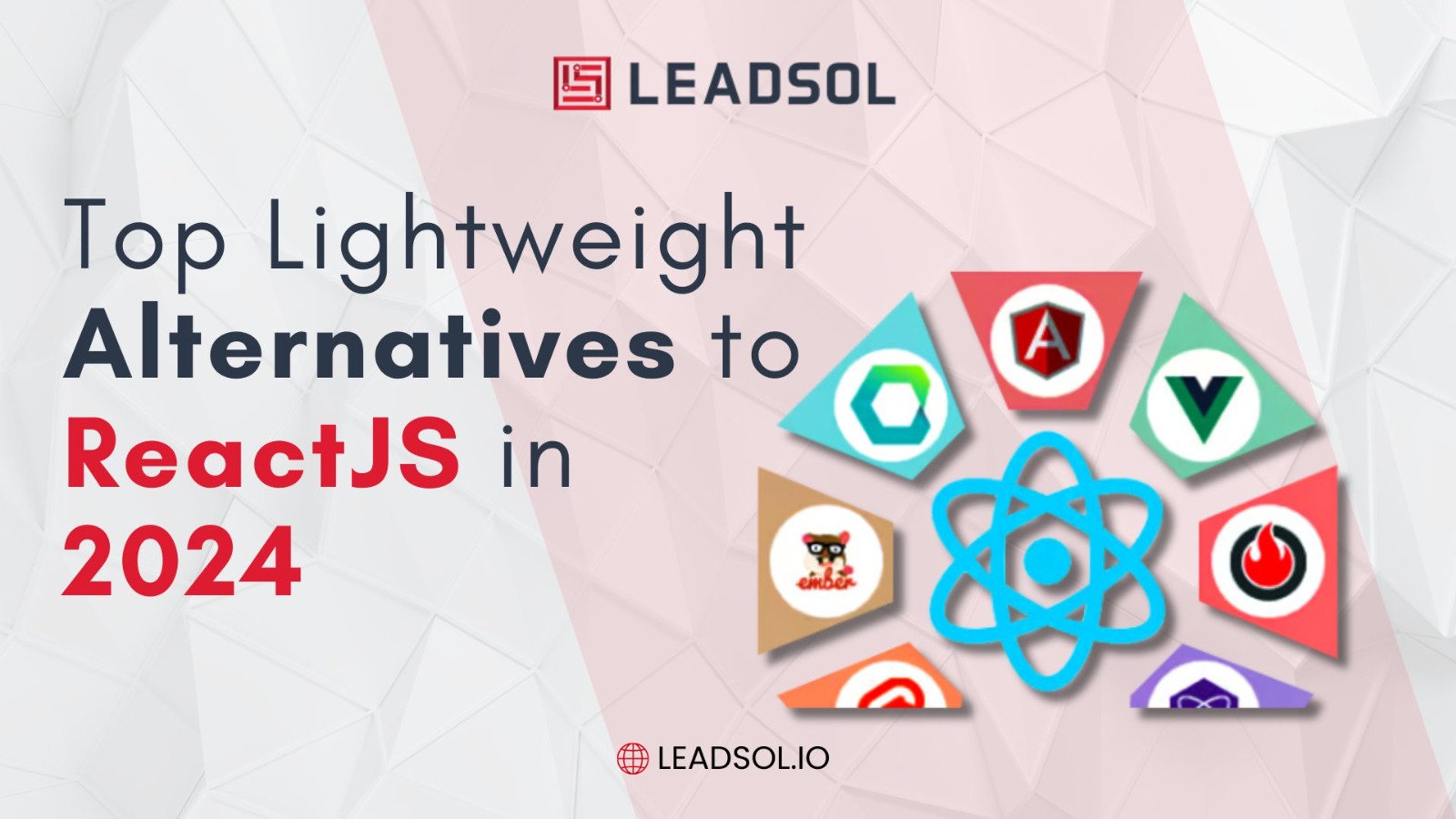ReactJS has been leading the world of front-end development with a powerful ecosystem and a great community. However, with the continuous evolution of web development, developers often look for lightweight and efficient alternatives that can help them get a similar job done with less overhead. In 2024, some of these emerging frameworks and libraries are already in use as popular lightweight alternatives to ReactJS. Let’s discuss some best alternatives options of ReactJS available today.
Preact
One of the first names one hears when talking about lightweight alternatives to React. Preact weighs in at a minuscule 3KB; therefore, it’s incredibly lighter than React, which makes it a perfect candidate for projects in which performance and load time are critical. While this little library doesn’t have all the features of React, it bears resemblance in API and therefore doesn’t require a steep learning curve for a developer.
Key Features:
Compact Size: Only 3KB, including all core features.
React Compatibility: Most React components work out of the box with Preact.
Faster Performance: Because of its size reduction, Preact loads faster and occupies less memory.
Best Use Cases:
- High-performance applications
- Speed-spoof and minimal bundle-size-focused projects
Svelte
Svelte become popular a lot in recent years due to its unique perspective towards building user interfaces. It does not rely on Virtual DOM, as React does. Instead, Svelte would move much of the effort to compile time, producing highly performance-efficient, imperative code that updates the DOM directly. This leads to faster runtime performance and smaller bundle sizes.
Key Features:
No Virtual DOM: Compiles components during build time for faster updates.
Less Boilerplate: More readable concise code.
Reactive Framework: The baked-in reactive nature makes state management a lot easier and more intuitive.
When to Use:
- Applications with dynamic and/or interactive features.
- Projects where performance is crucial.
SolidJS
SolidJS is a relatively new entry in the front-end framework landscape but has risen rather quickly due to its fine-grained reactivity and efficiency in rendering. Like Svelte, there is no virtual DOM usage in SolidJS too. It focuses on direct DOM updates, so it is very fast. It’s highly optimized, and being a lightweight framework, it can be a good alternative to React because it uses the same syntax as JSX.
Key Features:
Fine-grained reactivity: For more detailed updates. Through this, the library can skip even more extra re-renders.
Zero dependencies: Smallest size and extremely fast performance
Familiar Syntax: It utilizes JSX, whereby the transition from React is pretty easy.
Use Cases:
- Realtime applications
- High-performance rendering projects
Mithril
A lesser-known framework, Mithril is a highly valued framework due to its simplicity and performance. At about 8KB, Mithril is one of the smallest libraries out there. Providing a simple API that is easily understood, it has built-in solutions for routing and minimalist ways to manage state. This makes it perfect for those developers looking for a light framework with a small learning curve.
Key Features:
Small Size: Lightweight and fast.
No Dependencies: Just vanilla JavaScript, no dependencies.
Easy Learning Curve: Simple API and well-documented.
When to Use:
- Small to medium-sized applications
- Projects where simplicity and speed matter
InfernoJS
Performance is factored into the making of InfernoJS, and because of this, many describe it as the fastest of the frameworks available. It comes with a React-like API that is easy for the developer to adopt since most developers are familiar with React. InfernoJS has been optimized for the highest performance on mobile devices and supports SSR, JSX, plus much more.
Key Features:
High Performance: Built with speed, hence offering the best-in-class rendering performance.
React-Like API: Eases the learning curve for developers already using React.
Support for SSR: It’s an excellent option for isomorphic applications.
Use Cases:
- Performance-critical applications
- Mobile-first application
Vue 3 with Composition API
The brand new Vue 3, especially with its Composition API, has managed to earn a great spot for itself in the lightweight framework space. While Vue isn’t as lightweight as many of the other options on this list, its ease of use, flexibility, and performance optimizations make it a viable alternative for people looking for something with more structure than React but without the overhead.
Key Features:
Composition API: Extremely flexible and reusable code is possible with this API.
Progressive Framework: Can be scaled up or down depending on the project at hand when working with Vue.js.
Excellent Documentation: Great community and detailed guides.
Ideal For:
- Applications requiring structure, with flexibility
- Projects where developer experience is in focus
Conclusion
With ReactJS still being the go-to for user interface development, it would appear that this need for something lighter and leaner encouraged several great enhancements in the frameworks and libraries. Depending on what exactly your needs are-performance, bundle size, ease of use, or everything combined- there is a lightweight alternative fitting just about any of these needs.
If you’re going to select a framework or a library, keep in mind your explicit project requirements, the technology experience of your team, and, the maintainability of the codebase in the long run. Each of the above has unique advantages to make them worth considering as a ReactJS alternative in 2024.



